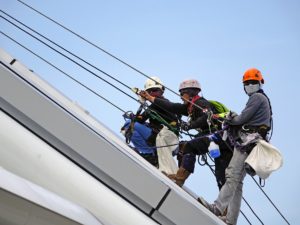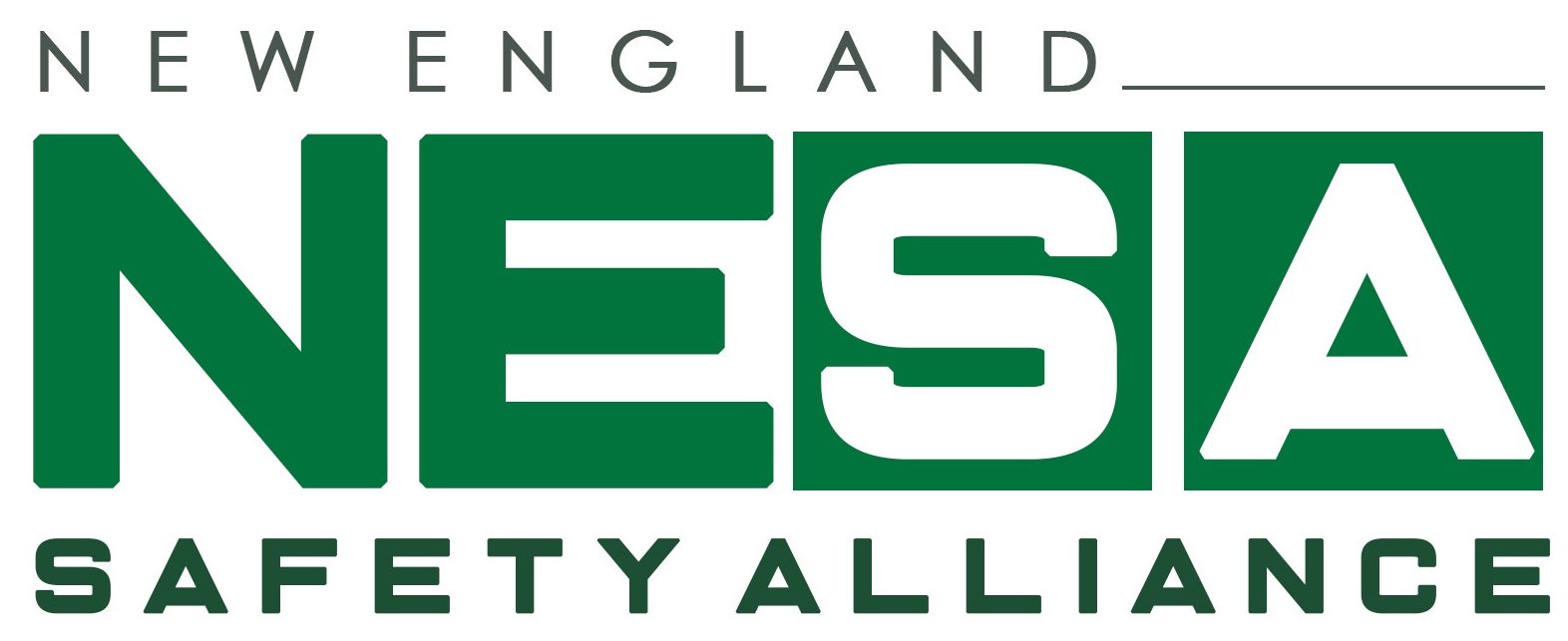Training and Certifications
OSHA 10/30 Certification
Certification Course designed to train employees on introductory to comprehensive level OSHA standards for general and construction industries. Training includes Workers Rights, Fall Protection, Electrical Safety, Struck-By and Caught In/In-Between. Additional classes typically include ladder and scaffolding safety.

First Aid, CPR and AED Certification
New England Safety Alliance is a proud provider of American Red Cross First Aid, CPR and AED Training. First aid components incorporate the latest science and teaches students to recognize first aid emergencies such as burns, cuts, scrapes, sudden illnesses, head, neck, back injuries, and heat and cold injuries. Students will also learn how to respond to breathing and cardiac emergencies using hands on training. Successful students will receive a Red Cross certificate valid for 2 years.

Forklift Certification
Stay OSHA compliant with our industrial lift certification class.

Fall Protection
This class covers 1926 subpart M, OSHA’s fall protection standard for construction and provides an overview of fall protection methods. Course topics include principles of fall protection, components and limitation of fall arrest systems, and overhead falling object protection.

Excavations, Trenching, and Soil Mechanics
This class covers OSHA excavation standards and safety and health aspects of excavations and trenching. Class topics include practical soil mechanics and its relationship to the stability of shored and unshored slopes and walls of excavations, introduction of various types of shoring (wood timbers and hydraulic), soil classification, and use of protective systems.

Electrical Safety
This class covers OSHA’s electrical standards and hazards associated with electrical installations and equipment. Topics include temporary wiring, grounding, ground fault circuit interruptors, and safety related work practices. Emphasis is placed on electrical hazard recognition and OSHA policies and procedures.

Scaffold Hazard Awareness
Identifies hazards and controls associated with scaffolds as well as OSHA regulations. Topics of discussion include types of scaffolds, general hazard categories of physical, structural, mechanical, electrical and training requirements.

Ladder Safety
Provides information on the safety concerns and precautions associated with various types of ladders. We will discuss safety guidelines and requirements for ladders used at a construction site in accordance with 29CFR1926 subpart X.

Hand and Power Tools
We will discuss OSHA requirements under 29CFR1926 subpart I, list the hand and power tool safety rules, identify the precautions essential to the safe use of different types of tools, name the guarding techniques that apply to hand and power tools. This class goes well with Personal Protective Equipment.

Machinery & Machine Guarding
Familiarizes the participant with various types of common machinery and the related safety standards. Guidance is provided on the hazards associated with various kinds of machinery and the control of hazardous energy sources (lock out/tag out). The class presents an approach to machinery inspection that enables participants to recognize hazards and to provide options to achieve abatement. These hazards include mechanical motions and actions created by points of operation and other machinery processes.

Permit Required Confined Spaces
Increases knowledge of hazards associated with permit-required confined space entry. Topics include: OSHA standards for confined space entry, and the implementation in general industry 1910, hazards associated with confined space entry, permits, procedures and written programs, roles and responsibilities of entrants, attendants and supervisors, personal protective equipment, ventilation and purging, and emergency procedures and confined space rescue requirements.

Lockout/Tagout
Provides participants with information on the importance of energy control programs, procedures, training, methods for controlling hazardous energy, and the knowledge and skills required to safety perform servicing and maintenance activities. Topics include: the employer’s role and responsibility to develop and implement an energy control program or Lock out/Tag out (LOTO); definitions relative to OSHA’s Control of Hazardous Energy Standard; hazardous energy sources and energy isolation options; training guidelines for authorized and affected employees and periodic inspection of energy control procedures.

Walking/Working Surfaces
Provides information on the safety concerns and precautions associated with various walking and working surfaces. We will discuss environments in which OSHA’s standards for walking-working surfaces (subpart D) do and do not apply, the general requirements for the maintenance of walking-working surfaces, define the rems floor opening, floor hole, and wall opening and describe the various methods for guarding them and other walking-working surface conditions.

Introduction to OSHA
This class serves as an introduction to the OSHA Program, what it stands for, and it’s purpose. We will discuss how to prepare for an OSHA inspection, what to do if OSHA shoes up at your jobsite, employer responsibilities under OSHA, discuss the use of OSHA Standards, explain how OSHA inspections are conducted, explain worker and employer rights under OSHA and how to mitigate OSHA citations.

Principles of Ergonomics
This course covers use of ergonomic principles to recognize, evaluate, and control workplace conditions that cause or contribute to musculoskeletal and nerve disorders.

Conducting an Accident Investigation
This course provides an overview of basic accident investigation analysis techniques and procedures. The objective of training is to help participants gain the necessary skills to conduct an effective accident investigation in the workplace.

OSHA Recordkeeping
Designed to assist employers in identifying and fulfilling their responsibilities for posting certain records, maintaining records of illnesses and injuries and reporting specific cases to OSHA. This course is for employees of companies who have responsibilities under OSHA’s revised Recordkeeping Rule 29CRP1904 (most companies with 10 or fewer employees and select low-hazard classes identified by OSHA are exempt).

Globally Harmonized Systems (GHS)
December 1, 2013 marks the first critical implementation date when employees must be trained on new workplace label elements and the updated Safety Data Sheet (SDS) format. Employee HAZCOM training must be updated so that workers can recognize and understand the new labels, pictograms, new hazard statements and precautions on SDSs.

Personal Protective Equipment
Designed to provide an overview of Personal Protective Equipment (PPE) designed to protect your head, face, eyes, ears, hands, feet, respiratory tract, and body from injury and discuss the importance of selecting the PPE that is right for the job you may perform. We will discuss why PPE matters, eye and face protection, head protection, hearing protection, hand protection, foot protection and respiratory protection.

Back Safety Awareness
This class is knowledge and performance-based training that is designed to provide employee training and education on proper back care and proper lifting techniques for overall back safety.

